Patient Monitors
Patient Monitor Testing
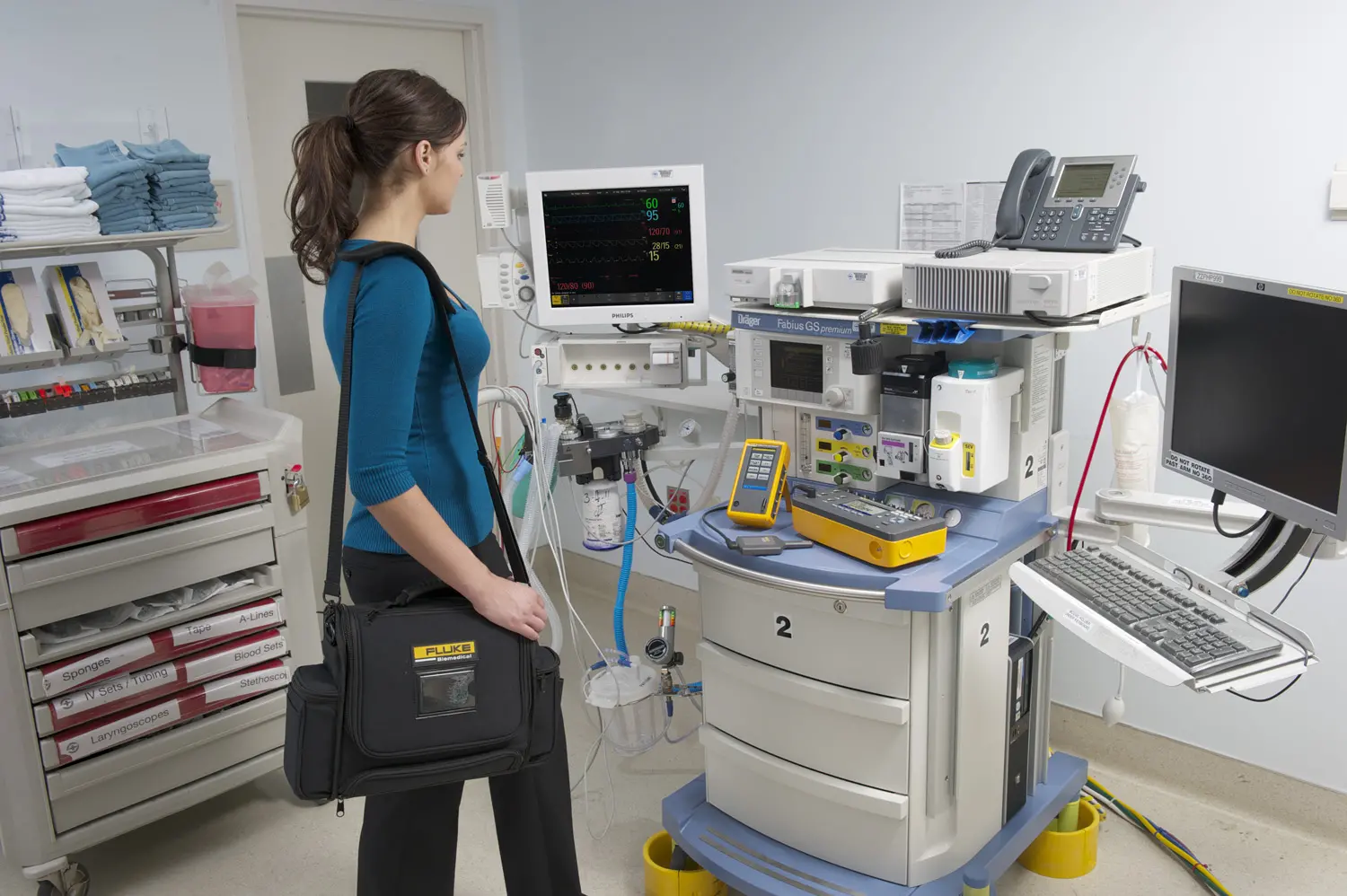
Patient monitors are devices used to measure a patient’s vitals such as their temperature, SpO2, and blood pressure. These devices are essential for healthcare workers who use them regularly to keep an eye on each individual patient’s physiological parameters.
To test patient monitors, you need to have patient simulators: this is where Fluke Biomedical comes into the picture. Our testers provide electrical or optical signals that are similar to those from a human patient. The simulators verify patient monitors function correctly to help staff provide accurate treatments and diagnoses.
Experts at Fluke Biomedical have designed comprehensive patient simulators including ones that have multi-parameter functionality. That means these testers are made to check a variety of parameters including non-invasive blood pressure (NIBP), oxygen saturation (SpO2), and electrocardiogram (ECG) by clicking just a few simple buttons.
Our Patient Simulator Products
Patient monitors need to be tested annually– if not more– and our patient simulators are made to simplify and speed up the testing process. Our testers are designed to simulate each patient’s vital signs such as respiration, cardiac output, and fetal ECG/IUP in mere minutes. These products then send simulated parameters to the patient monitor to ensure it is reading everything correctly.
Our Prosim 8 device is an all-in-one patient simulator that can complete testing on as many as eight parameters in just five minutes. The device has a pre-set of the six most common parameters: ECG, NIBP, invasive blood pressure (IBP), SpO2, respiration, and temperature. The industry-leading device can also test Masimo Rainbow oximeters and is available for global use in seven languages including English, Spanish, and Chinese.
We’ve meticulously engineered our simulators to easily test multiple patient parameters. These simulators are intuitive and tailored to meet the needs of testers. Our team at Fluke Biomedical has worked hard to create a seamless testing process, so medical professionals can focus on saving lives.
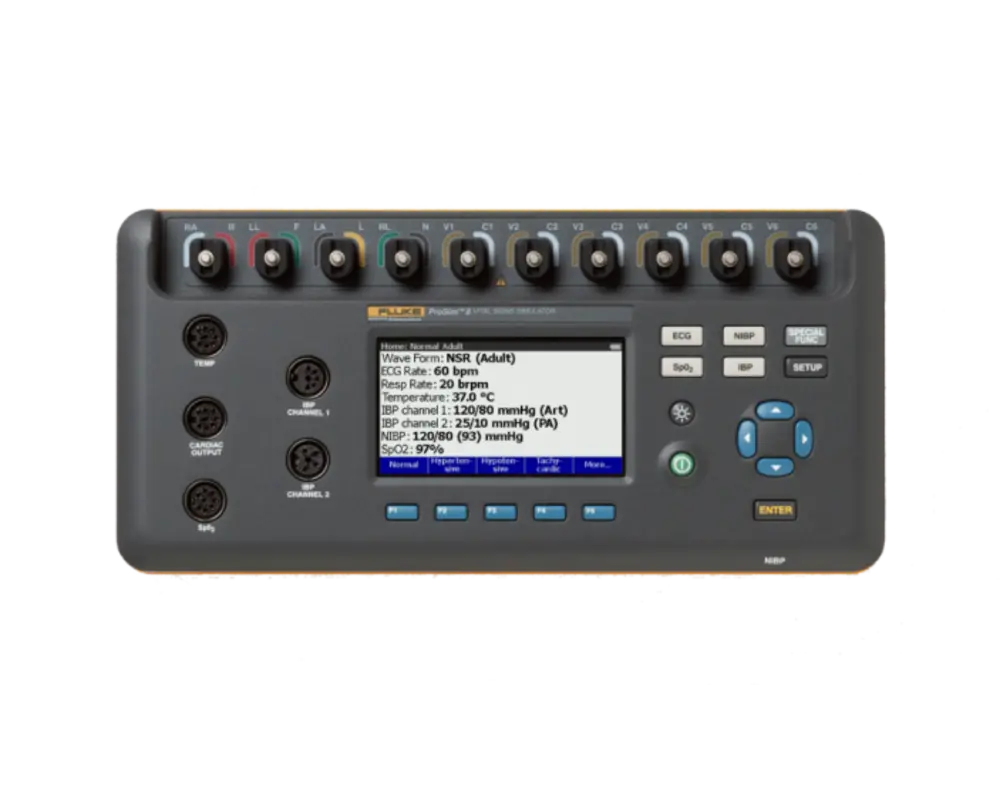
ProSim 8 Vital Signs and ECG Patient Simulator
8-in-1 patient simulator that can test multiple parameters in minutes
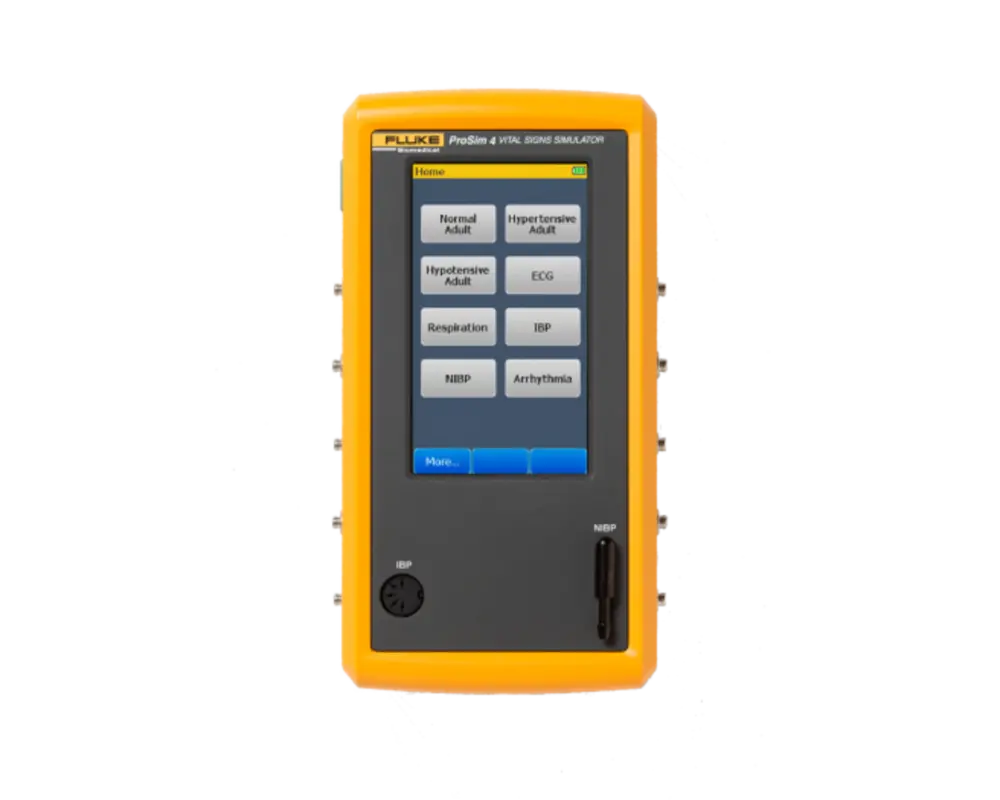
ProSim 4 Vital Signs Patient Simulator
One-tap tester that can complete checks within 60 seconds
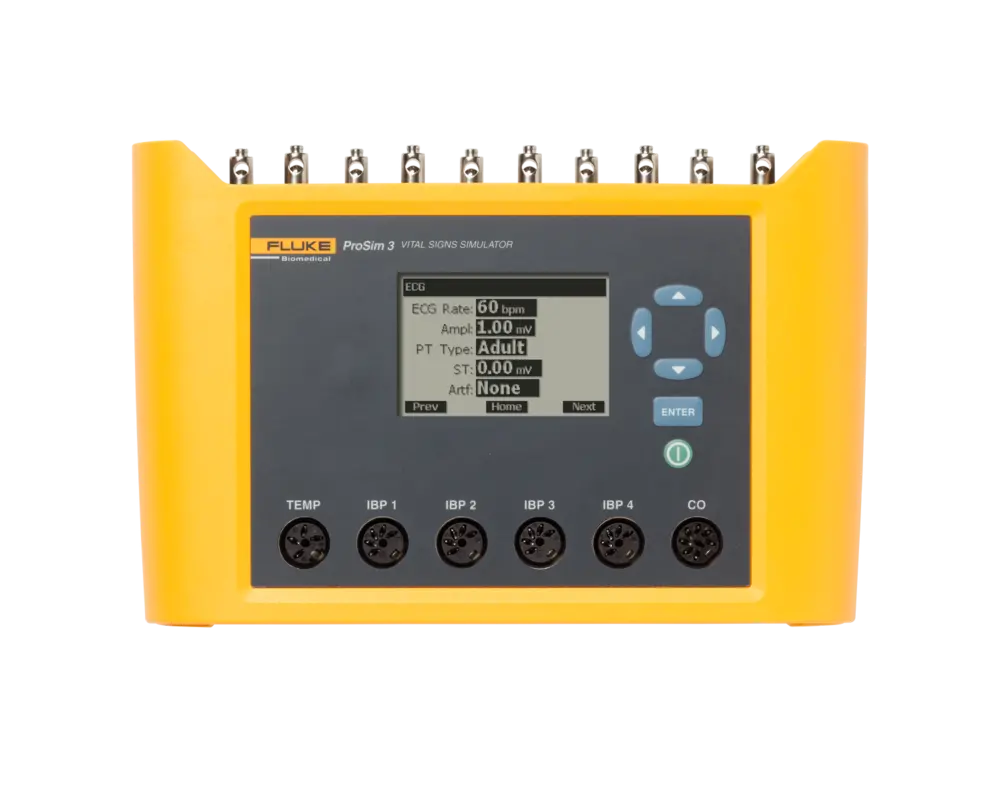
ProSim 2 and 3 Vital Sign Simulators
Portable tester providing vital signs simulations
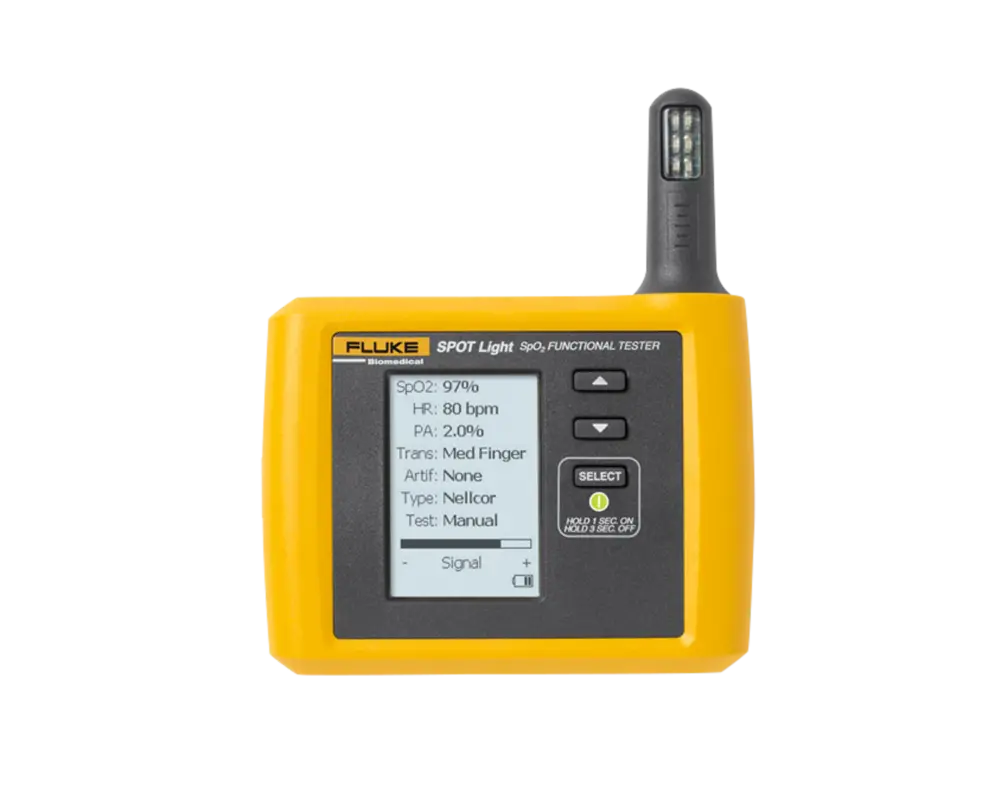
Patient Monitor Simulator Testing FAQ
What is patient monitor testing?
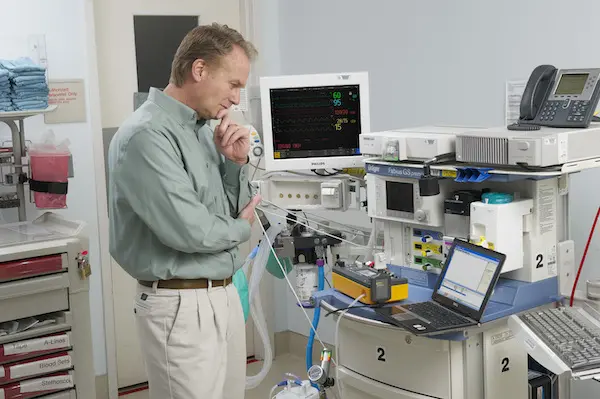
Patient simulators use advanced simulation tools that mimic human physiological responses to test the equipment, confirming that patient monitors are fully operational and conducting thorough and correct readings. Patient monitor testing is imperative to ensure patient monitors are functioning as they should be. These devices are one of the most common and essential medical devices because they give healthcare staff a clear overview of the well-being of each patient.
Testing patient monitors is not a one-size-fits-all approach mainly because patient monitors don’t have just one function. These devices measure a variety of parameters including:
- NIBP
- SpO2
- ECG
- Temperature
- IBP
- Cardiac Output
- Fetal Heart Rate (FHR)
Our experts have worked diligently to create patient simulators that assist in testing these multi-function medical monitors. Patient simulators mimic patient vitals to make sure monitors can distinguish when a patient is going through a variety of conditions such as apnea, hypotensive, and hypertensive, as well as normal symptoms. Our testers can also simulate conditions such as arrhythmias.
With patient monitor testing, it’s important to subject patient monitors to realistic scenarios and verify it can read and distinguish between varying physiological conditions. By detecting and addressing any inaccuracies or malfunctions patient monitor testing enhances patient safety and empowers healthcare staff to do their jobs by helping them trust the readings from these devices.
How often should you do patient monitor testing?
At a minimum, patient monitors need to be tested annually to ensure functionality and patient safety. These devices should also undergo acceptance testing (the incoming inspection when the device arrives) and testin well.
You should always follow the branded model-specific guidelines when it comes to testing. These guidelines outline the recommended testing procedures, frequencies, and specific parameters to evaluate. If you do not have your device’s service manual and can’t get it from the manufacturer itself you may be able to find it online. Frank’s Spirometry has a number of service manuals available including everything from patient monitors and ECGs to pulse oximeters.
Our patient simulators here at Fluke Biomedical are specifically designed to expedite testing processes, providing efficient and accurate results in minutes. After setting up cables, tubing, connectors, and other necessary tools for patient simulators, our devices can easily complete tests quickly and efficiently, some in as little as 60 seconds. To make the process even easier, our OneQA software platform can automate the testing process.
Why is patient monitor testing important?
Patient monitors are one of the key instruments for medical professionals to get a baseline idea of how their patients are doing when it comes to their vitals. This information leads them to make decisions about medications and diagnoses that could be life-alerting, which makes patient simulator testing imperative for quality assurance.
Misreading even one parameter could lead to adverse drug events, wrong diagnoses, and more health risks. Let’s look specifically at NIBP or SpO2 parameters. If a patient monitor incorrectly measures a stroke patient's blood pressure it could cause a doctor not to prescribe the necessary medication that the patient would need to survive.
Or imagine a situation where a staff member decides to do a pulse oximetry test to check SpO2 by just using their finger. While that may seem like an easy way to do the test, it’s not reliable and could lead the monitor to misread when a person’s oxygen level is dropping, putting their life at risk.
If patient monitors don’t function as they should, healthcare providers will not be able to discern how to help their patients. Subtle inaccuracies or lack of repeatability of the patient monitor parameter may lead to misdiagnosis resulting in less than favorable treatment or more dangerous health risks. As patient parameters become more sophisticated our risk assessment needs to be constantly reviewed and reconsidered.
Where can I learn more about patient simulators and patient monitor testing?
Our team at Fluke Biomedical is devoted to what we do, and we have a deep desire to share our knowledge about biomedical testing including patient monitor testing with others. We have dozens of webinars led by our team of biomedical experts including one on the best practices of patient monitor testing. By signing up to watch the webinar, you can receive 1 CE credit from ACI.
Along with our webinars, the knowledge center tab on our website includes all sorts of additional articles and videos about biomedical testing equipment. Here at Fluke Biomedical, we also offer Advantage Training. This free online training site is in-depth and offers interactive training including a one-hour e-learning course on medical device quality assurance when it comes to patient monitors as well as a two-hour introduction course into the inner workings of our ProSim 8.
We are deeply committed to our promise to empower everyday heroes to focus only on protecting lives. Biomedical testing can be overwhelming. There is so much to keep in mind when testing medical devices, especially devices such as patient monitors that measure so many different parameters. Our goal is to make the testing process as easy as possible, so workers can focus on their true jobs at hand with the assurance that these medical devices will assist and not hinder what they do.
More Resources for Patient Simulators
Patient Simulator Testing with the ProSim 8
This 30-minute demo goes over how to test using the ProSim 8 device
Watch this “Demo Day”
NIBP Testing and Best Practices
Learn in this webinar how to accurately do NIBP testing
Testing NIBP Best Practices
5-Minute Patient Simulator Testing
Learn how to do patient monitor testing with our ProSim 8 in 5 minutes
Complete Preventive Maintenance Testing
Deciding on Your ProSim Bundle
This YouTube series goes over how to choose the best ProSim bundle for your company
Learn which ProSim Bundle is Right for You
